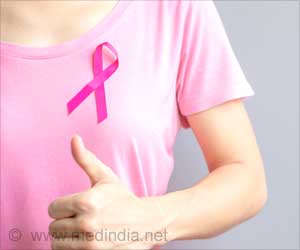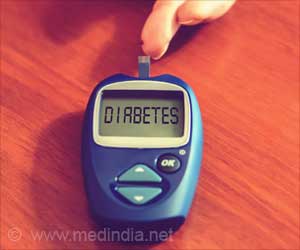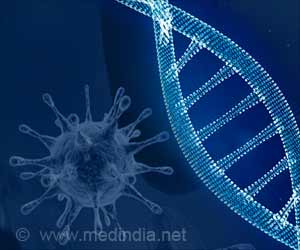The first organized effort to bring widespread attention to breast cancer occurred as a weeklong event in the United States in October 1985, founded by the American Cancer Society and the Imperial Chemical Industries Pharmaceuticals (later part of AstraZeneca).
Since then, campaigns to increase awareness of the disease, to educate people about methods of prevention and early detection, and to raise money to support research have extended to countries around the world.
Breast Cancer
Breast cancer is a type of cancer that arises from the cells present in the breast tissue. It is more common in women above the age of 40 years. Initially, the cancerous growth is confined to the one area that generally causes no symptoms.
Over time it may progress and invade the surrounding breast tissue and then to other organs in the body. If a woman dies from breast cancer, it is because of widespread.
Global burden
- In 2020 more than 2.3 million women across the globe were diagnosed with breast cancer and 685,000 died
- About 13% women have a chance of being diagnosed with breast cancer in her lifetime
- It represented about 12 percent of all new cancer cases and 25 percent of all cancers in women
- Breast cancer gives the lost disability-adjusted life years (DALYs) to women globally than any other
type of cancer - Approximately 0.5-1% of breast cancers occur in men
- Breast cancer incidence has increased by more than 20% and mortality has increased by 14%
- On average, every 2 minutes a woman is diagnosed with breast cancer in the United States
- For every minute 1,400 women die every day globally from breast cancer
- Survival of breast cancer after diagnosis ranges from more than 90% in high-income countries, to 66% in India and 40% in South Africa.
Interesting Facts
- Breast cancer has been called the “nun’s disease” because a woman’s risk of getting breast cancer increases with the number of menstrual cycles she experiences.
- Breast cancer is more common in the left breast than the right
- Shift work may increase the risk of breast cancer
- Having a male relative who had breast cancer also increases the chance of getting breast cancer
- There is no evidence of a connection between using underwire bra and breast cancer
- In ancient times, a mixture of cow’s brain and wasp dung were applied to breast tumours for four days.
Who is at risk?
There is no sure way to prevent breast cancer but everyone can take steps to lower their chances of getting breast cancer by drinking less alcohol, maintaining a healthy weight, keeping physically active, avoiding breast implants, controlled use of birth control pills and hormone therapy.
Some factors are outside our control, including:
- Being a woman
- Getting older – 80% of breast cancers occur in women over the age of 50. Most men who get breast cancer are over 60.
- A family history of breast cancer
Know your symptoms
When breast cancer is detected early, it is easier to treat successfully. This prevents deaths from breast cancer. Getting regularly screened with mammogram (low-dose x-rays of the breast) after 40 years, and self-examination is the most reliable way to find breast cancer early.
Be aware of changes in breasts to know the signs and symptoms of breast cancer. The most common symptom of breast cancer is a new lump or mass.
Other possible symptoms of breast cancer include:
- Swelling of all or part of a breast (even if no lump is felt)
- Skin dimpling (sometimes looking like an orange peel)
- Breast or nipple pain
- Nipple retraction (turning inward)
- Nipple or breast skin that is red, dry, flaking or thickened
- Nipple discharge (other than breast milk)
- Lump or swelling under the arm or around the collar bone
How should a breast self-exam be performed?
In the Shower – With the pads of 3 middle fingers, check the entire breast and armpit area pressing down with light, medium, and firm pressure. Check both the breasts each month feeling for any lump, thickening, hardened knot, or any other breast changes.
In Front of a Mirror – Visually inspect breasts with arms at sides. Next, raise your arms high overhead. Look for any changes in the contour, any swelling, or dimpling of the skin, or changes in the nipples. Next, rest your palms on your hips and press firmly to flex your chest muscles.
Lying Down – When lying down, the breast tissue spreads out evenly along the chest wall. Place a pillow under your right shoulder and your right arm behind your head. Using the left hand, move the pads of fingers around the right breast gently covering the entire breast area and armpit.
Use light, medium, and firm pressure. Squeeze the nipple to check for discharge and lumps. Repeat these steps for the left breast.
Treatment
Most women with breast cancer will have some type of surgery to remove the tumor. Depending on the type of breast cancer and how advanced it is, you might need other types of treatment as well, either before or after surgery, or sometimes both.
This October is time to “RISE: Rally in Supporting, Serving and Screening Everyone,” to uplift women in need and encourage women to go for breast cancer screening with the support of their family and friends to overcome fear, anxiety and uncertainty.
Cancer survivors, family members, caregivers, and medical professionals have a chance to share their perspectives on how cancer impacts their lives.
The various organizations have links to social media blogs, video platforms to make them feel proud of the voice of victory against this disease.
In this fund raising month for Breast Cancer Awareness, whatever donation made is appreciated. It all helps to fund life-saving cancer research.
Need of the hour is awareness about breast examination starting 30 years of age and regular screening from a qualified doctor to detect and treat breast cancer early.
“Early detection is the key to prevention”
References:
- Breast Cancer Awareness Month
– (https://www.nationalbreastcancer.org/breast-cancer-awareness-month) - Breast Cancer Awareness Month
– (https://breastcancernow.org/get-involved/breast-cancer-awareness-month) - Breast Cancer Awareness Month – October 2021
– (https://www.preventcancer.org/event/breast-cancer-awareness-month-2021/)
Source: Medindia



